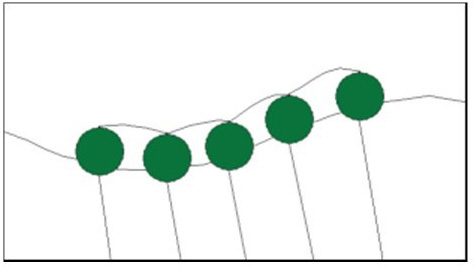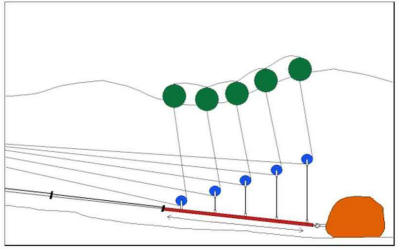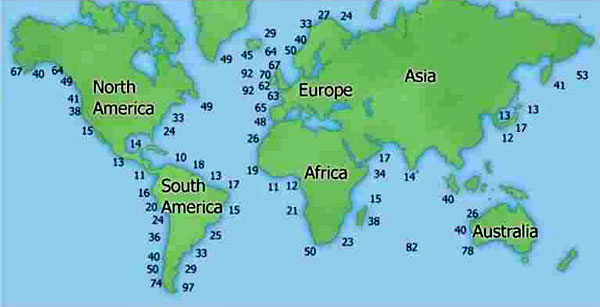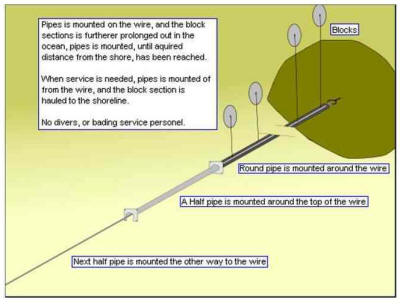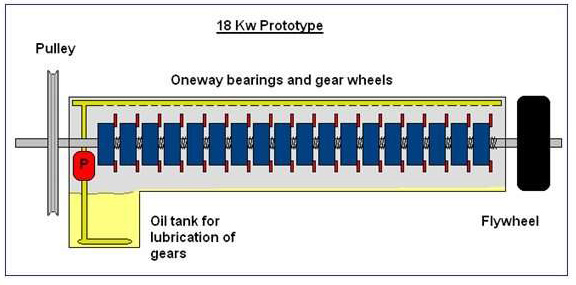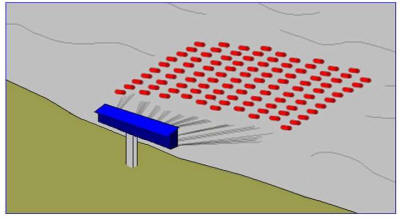|
by Benjamin Fulford from Rense Website
A man by the name of
Stefan Nystrom
invented a way to generate energy from ocean waves that he claims
would cost 5% of what coal energy does.
Before I could do anything, yesterday I received a disturbing set of phone calls from a very scared sounding Mr. Nystrom.
Then I lost contact with him, and his phone has been switched off.
In his last call, he asked me to make his technology public. So, here below is a description of his technology.
Would people please pass it on and would as many people, in a tribute to a man who has probably been killed by mercenaries hired by the oil industry, and make sure that prototypes are developed.
Wavereaper™ the Technology
Waves work in a constant movement up and down,
forth and back, and we can with the WaveReaper™, a simple mechanical device
take advantage of this in a cheap way.
Most of the parts in a generator, except wiring,
can be made of wood or plastics.
WaveReaper plastic barrels in the ocean waves
WaveReapers plastic barrels
in the waves.
We will use a set of plastic barrels as boys,
cost is low, and Pvc isn't affected by salty ocean water. The barrels are
placed near shore or longer out in deeper water, depending on amount of
energy needed in particular wave plant.
The location of choice is the main parameter for
the size of the barrels, smaller waves, smaller barrels, and vice verse.
Wave heights can possible catch range from 2 foot and up.
WaveReaper power transmitting wires and blocks transferring force to onshore generator
Power-transmitting wires, and
seafloor based blocks.
The number of barrels, can be larger, but i
think, for practical reasons, a number of 100 on each plant, would be good,
and reasonable, this amount, can in the shore line version, give up to 500
kW of energy, or even more if special locations, and in a plant that covers
100 meter of shoreline, that makes it, 3 mw per kilometer shoreline.
Power in kw per meter WaveReaper after losses, est. 30% of figures shown is electricity
Power out put of waves kW per
meter of WaveReaper, approx 30% energy after conversion. Example, number of barrels in each row 10, and rows 10, the plant would be 20 x 20 meters of area, 400m2, and will have 100 connected wires, which transfer the mechanical energy, to the generator.
This type of plants, give 100 to 300 kW every hour, which generates profits, of 6500 to 20 000 dollars of revenue monthly, building cost of the plant is estimated to 20 000 dollars only.
This give that the WaveReaper earns itself, in a
few months, instead of years.
WaveReaper set of block which can be hauled in without divers, reverse half-pipes, on stainless steel wire
Reverse Half-Pipes makes it
possible to haul gear without divers. I have chosen to use cheap materials only, in this demonstration, because the need to bring down production costs, and make it possible to build this type of wave generation device, any where in the world, and with local materials, as car parts etc, which doesn't needs to be imported.
Other materials could of course be used, and the
schematics for its design of course, be different. Simple is better, it is
said, and fewer parts, and bearings, will bring lower cost of building, and
also repair.
In case of storm and rough waves, it is a problem, for all wave energy constructions, however, the Wavereaper™, has a built in safety feature in its construction, that would avoid damage on the equipment, its due to the max lifting force of the barrels, since the will sink under the surface, if the force is to great. this will make the Wavereaper™ possible to work in any weather, however it should be constructed, to take advantage, of the medium wave, that is present at all time, for best cost benefit of the plant.
15 to 300 Kw WaveReaper prototype schematic The wire is connected to a chain in the end, witch works on a gearwheel sitting on a one-way bearing, mounted on an axle.
This translates the pulling force of the wire, to an circular movement which is good for cheap generators. The wire is for this case 4 mm stainless steel, which give a lifting ability of approx 300 Kg before it brakes.
Also plastic can be used as Pvc band, which
today is commonly used for packaging goods on pallets, this type of Pvc band
has high strength, and is also light, and cost-effective, of course the UV
light from the sun is affecting it in the long run, but the part that is in
the water, should be somewhat guarded from the UV rays.
When the wire coming to the generator housing, a
chain is mounted to the wire, which drive the Gear wheel, and the one way
bearing, which makes the chain draw, when the waves raises the barrel, but
let it spin freely back, when the wave height is going down again, also a
small weight is connected to the chain, to make it even out slack of the
wire. A flywheel is mounted, and a pulley drives the generator, evenly.
The waves up and down, movement is translated to rotating movement, suited for a generator, of choice.
The flywheel is storing the momentum gained from
the waves temporarily.
WaveReaper Onshore version in the ocean
This technology, is in as private, non commercial, or company, 15Kw max output, offered globally for free, however, an voluntary size of donation, to wwwo2gruppen.se is gladly accepted to get a “free” license...
Anyone can now build his very own, generator.
Oil based economy, is gone, lets all accept it, and build a better world, feed the hungry, cure the sick, and of course, stop polluting the environment, with the oil based stone age technology.
|

